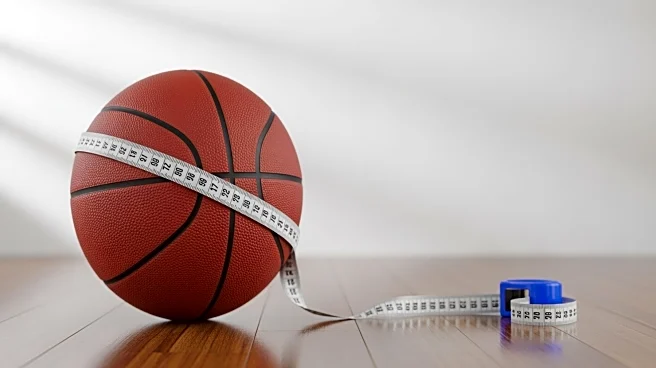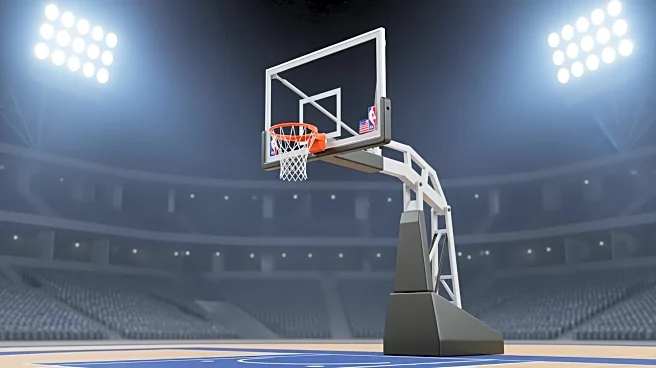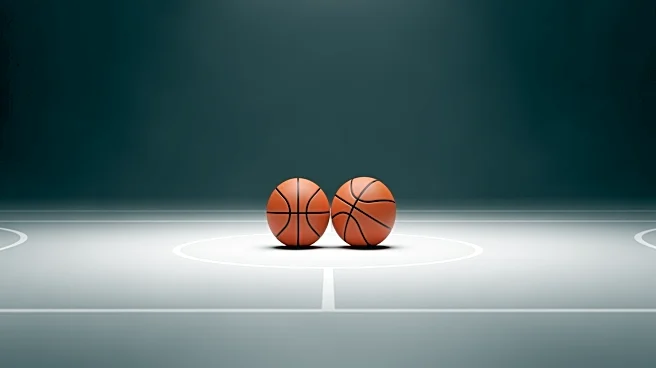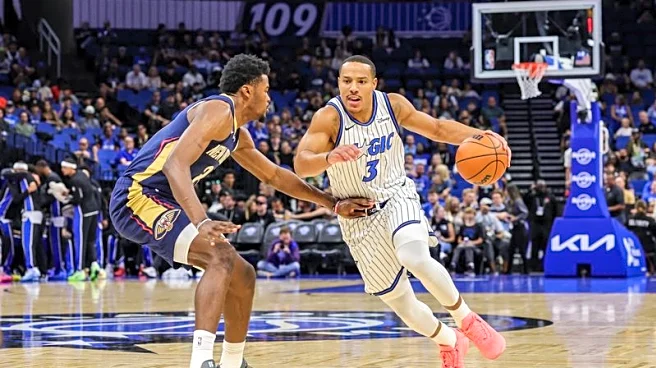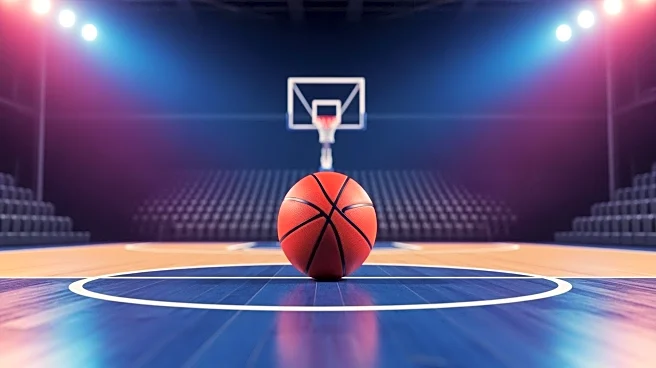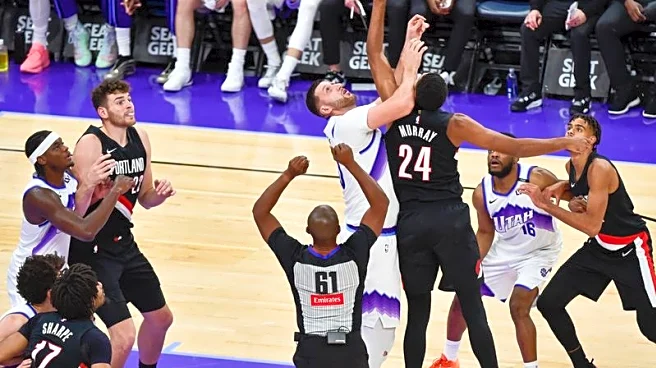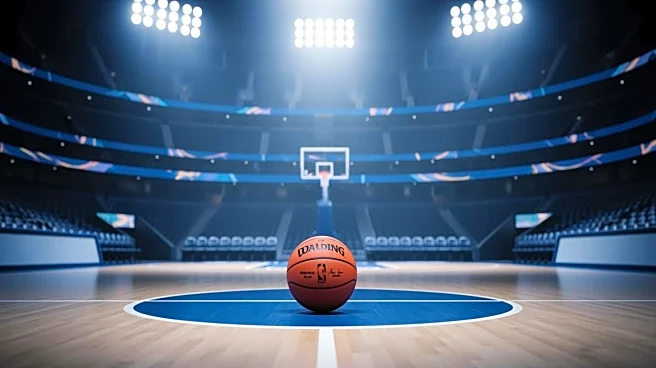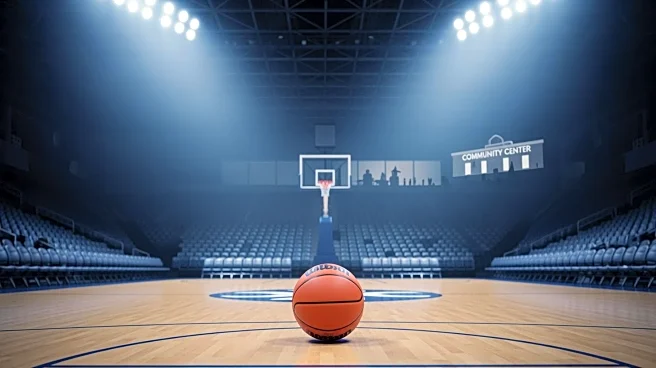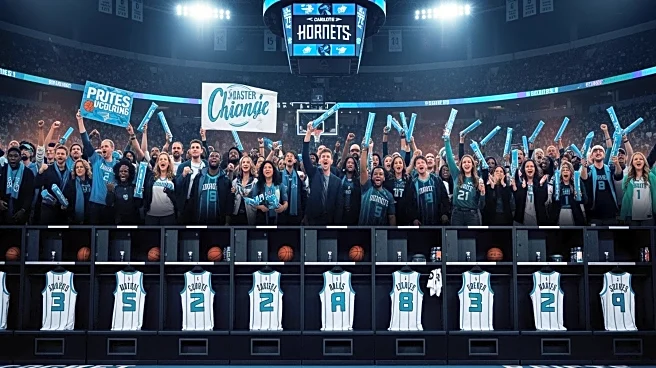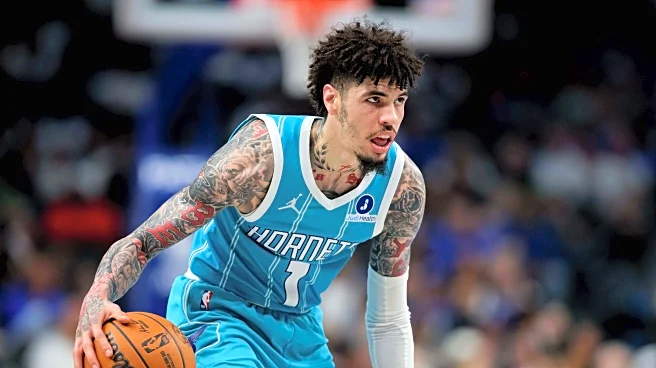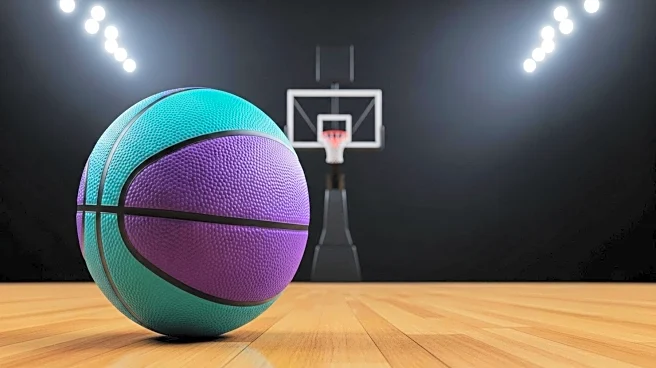What's Happening?
Charlotte Hornets guard Collin Sexton has been officially listed at a height of 6'0", down from his previous listing of 6'3". This change comes as part of a broader adjustment in player measurements ahead
of the 2025-2026 NBA season. Sexton, who has been in the NBA for eight years, was previously listed at 6'3" throughout his career. Despite the height reduction, Sexton remains a key player, having averaged 18.4 points and 4.2 assists last season with the Utah Jazz, while maintaining a shooting accuracy of 48% from the field and 40.6% from three-point range. Other Hornets players, including LaMelo Ball, Brandon Miller, Kon Knueppel, and Miles Bridges, also experienced a reduction in their listed heights by an inch.
Why It's Important?
The adjustment in player heights could have implications for team strategies and player evaluations. Accurate height measurements are crucial for matchups and defensive assignments in the NBA. For Sexton, the change might affect perceptions of his playing style and capabilities, particularly in a league where height can influence a player's role and effectiveness on the court. The Hornets, as a team, may need to reassess their lineup strategies and player roles based on these new measurements. This development also highlights the importance of transparency and accuracy in player statistics, which can impact contract negotiations and player marketability.
What's Next?
The Hornets and other NBA teams may need to adjust their strategies and player roles based on the updated height measurements. Coaches might reconsider player matchups and defensive assignments, particularly for players like Sexton who have seen significant changes. Additionally, this could lead to discussions within the league about the standardization of player measurements and the potential impact on player contracts and endorsements. Fans and analysts will likely keep a close eye on how these changes affect player performance and team dynamics throughout the season.
Beyond the Headlines
This development raises questions about the accuracy of player statistics and the potential for discrepancies in other areas, such as weight or wingspan. It also touches on the cultural aspect of height in sports, where taller players are often perceived as having an advantage. The Hornets' situation may prompt a broader conversation about the importance of accurate data in sports and how it influences perceptions and decisions at various levels, from coaching to fan engagement.
